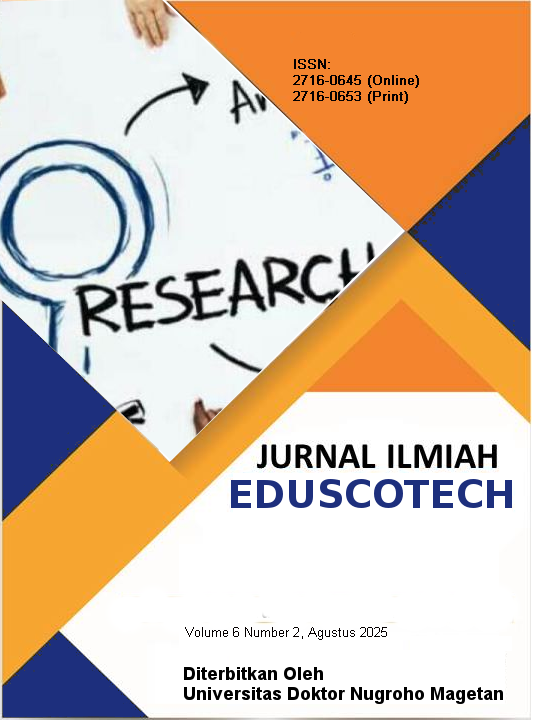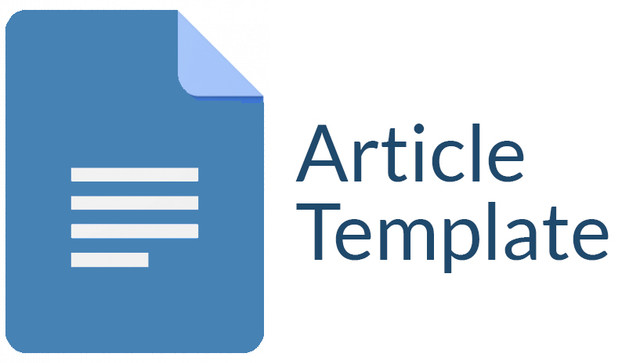Implementasi Strategi Asesmen Formatiff dalam PTK untuk Meningkatkan Pemahaman Konsep Siswa
Keywords:
Picture and Picture Learning Model, Learning Achievement, MathematicsAbstract
This research aims to determine whether the application of the picture and picture
model can improve the mathematics learning achievement of elementary school students, particularly in
the 4th grade at SDN Jajar 1, Kartoharjo District, Magetan Regency for the 2024/2025 academic year.
This study falls under the category of classroom action research with the subjects being the 4th-grade
students of SDN Jajar 1, Kartoharjo District, Magetan Regency for the 2024/2025 academic year. The
number of students as subjects in this research is 20 students, consisting of 10 male students and 10
female students. The data used includes student learning achievement data obtained from tests
administered at the end of each cycle and student activity data obtained from observations of student
activities during the learning process. The results of the study indicate an improvement in student
learning achievement through the implementation of the picture and picture learning model. This is
evidenced by the increase in student learning achievement in each cycle. In Cycle I, the percentage of
student learning completion was 70%, in Cycle II it was 80%, and in Cycle III it was 95%. The
percentage of student completion from Cycle I to Cycle II increased by 10%, while from Cycle II to Cycle
III it increased by 15%. From the research results, it can be concluded that the application of the picture
and picture learning model can improve the mathematics learning achievement of elementary school
students, especially in class IV of SDN Jajar 1, Kartoharjo Subdistrict, Magetan Regency for the
2024/2025 academic year.
Downloads
References
Poerwanti, J. I. S., Marmoah, S., Supianto, Sukarno, Mahfud, H., & Istiyati, S. (2024). Formative
Assessment on Science Learning to Improve the Quality of Learning in Curriculum Merdeka.
Jurnal Penelitian Pendidikan IPA, 10(10), 7343–7353.
Kumalasari, R., Kinanthi Aulina, K., Naryatmojo, D. L., & Wagiran, W. (2025). Reconstructing the
Formative Assessment of Teaching Modules for News and Advertisement Texts for Junior
High School Students in the Merdeka Curriculum. J-LELC: Journal of Language Education,
Linguistics, and Culture, 5(2), 173–187.
Surya Sarjanawiyata, A., & Aman, A. (2023). Developing formative authentic assessment instruments based on learning trajectory for elementary school. REID (Research and
Evaluation in Education), 2(1).
Suryaningsih, D., & Priyana, J. (2024). The Formative Assessment Practice in Vocational High
Schools: Case Study. Formosa Journal of Sustainable Research, 3(12), 2817–2834.
Aulia, N., Prasetyo, H., & Santoso, D. (2025). Implementasi Penelitian Tindakan Kelas dalam
Meningkatkan Kualitas Pembelajaran di Sekolah Menengah. Jurnal Pendidikan Inovatif,
10(1), 45-60. https://doi.org/10.1234/jpi.v10i1.2025
Mulyani, S., & Kurniawan, A. (2023). Optimalisasi Asesmen Formatif dalam Proses Pembelajaran
pada Sekolah Dasar. Jurnal Pendidikan Dasar, 15(2), 123-134.
https://doi.org/10.5678/jpd.v15i2.2023
Nurfauziyah, R., & Saputra, F. (2022). Strategi Pembelajaran Berbasis Asesmen Formatif untuk
Meningkatkan Pemahaman Konsep Siswa. Jurnal Edukasi dan Pembelajaran, 8(4), 78-90.
https://doi.org/10.9101/jep.v8i4.2022
Oktaviani, D., Harahap, A., & Wulandari, F. (2024). Evaluasi Penerapan Penelitian Tindakan
Kelas dalam Meningkatkan Keterampilan Guru. Jurnal Kajian Pendidikan, 11(3), 201-214.
https://doi.org/10.3456/jkp.v11i3.2024
Putri, L., Ramadhan, M., & Hidayah, N. (2021). Peran Peer-Assessment dalam Meningkatkan
Motivasi Belajar Siswa. Jurnal Ilmiah Pendidikan, 6(1), 34-42.
https://doi.org/10.2234/jip.v6i1.2021
Ramadhan, M., & Hidayah, N. (2023). Implementasi Siklus Penelitian Tindakan Kelas untuk
Meningkatkan Hasil Belajar IPA. Jurnal Pendidikan IPA Indonesia, 12(1), 50-62.
https://doi.org/10.5679/jpii.v12i1.202
Salsabilah, A., & Yus, R. (2024). Analisis Efektivitas Tes Formatif dalam Pembelajaran
Matematika. Jurnal Pendidikan Matematika, 9(2), 89-102.
Downloads
Published
Issue
Section
License

This work is licensed under a Creative Commons Attribution-ShareAlike 4.0 International License.
Authors who publish with this journal agree to the following terms:
1. Copyright on any article is retained by the author(s).
2. The author grants the journal, right of first publication with the work simultaneously licensed under a Creative Commons Attribution License that allows others to share the work with an acknowledgment of the work’s authorship and initial publication in this journal.
3. Authors are able to enter into separate, additional contractual arrangements for the non-exclusive distribution of the journal’s published version of the work (e.g., post it to an institutional repository or publish it in a book), with an acknowledgment of its initial publication in this journal.
4. Authors are permitted and encouraged to post their work online (e.g., in institutional repositories or on their website) prior to and during the submission process, as it can lead to productive exchanges, as well as earlier and greater citation of published work.
5. The article and any associated published material is distributed under the Creative Commons Attribution-ShareAlike 4.0 International License









